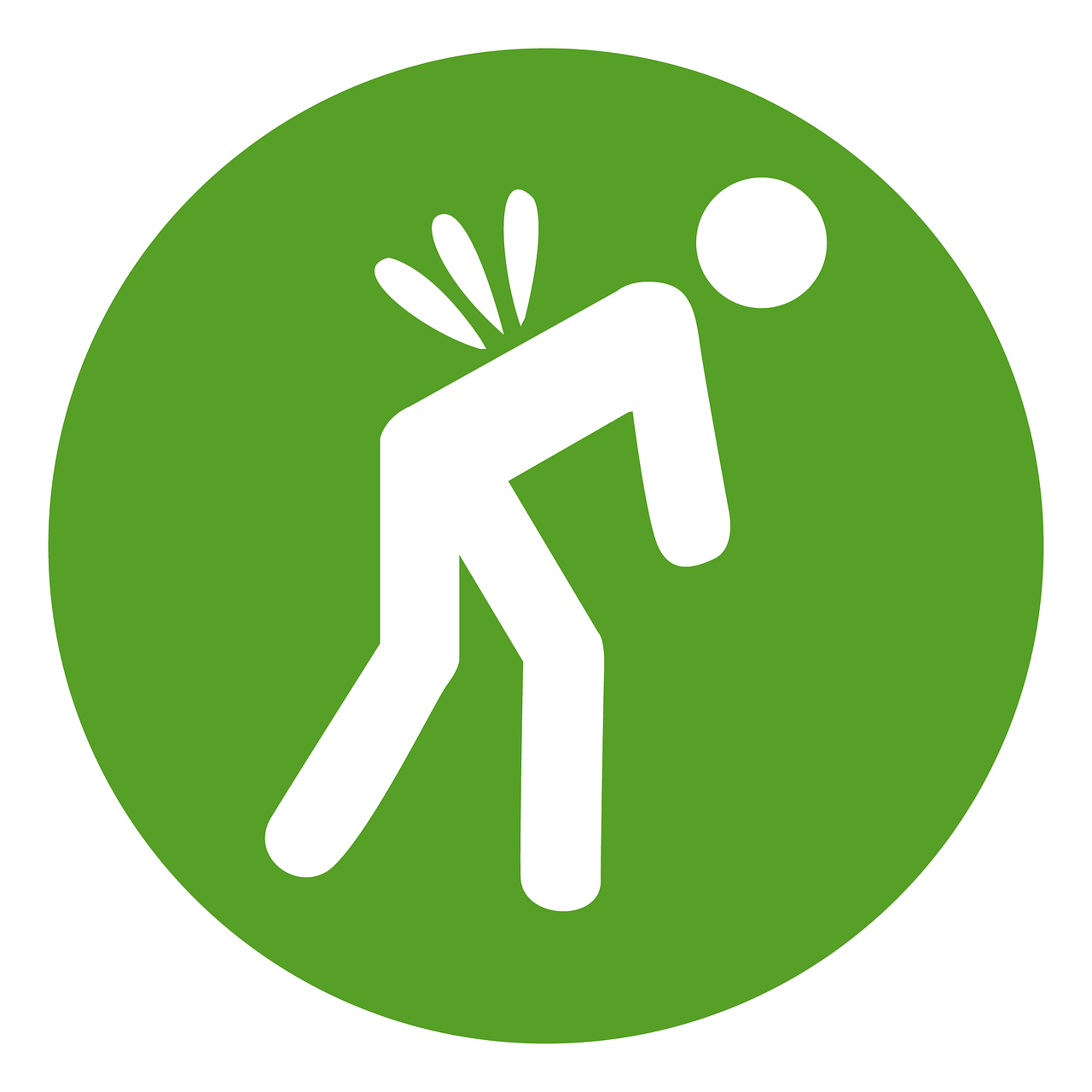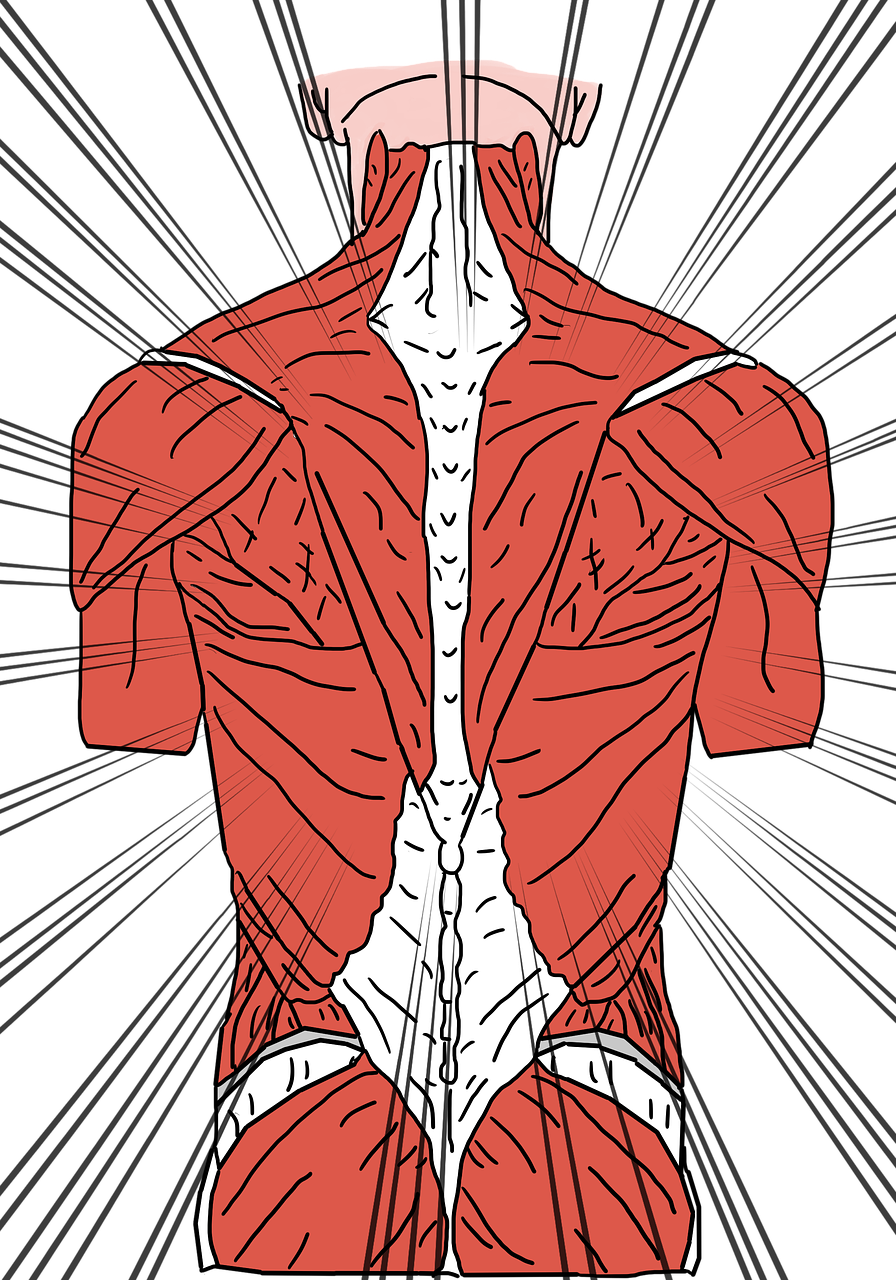Wing Chun with back pain
Wing Chun, a southern Chinese martial art, is renowned for its efficiency, simplicity, and directness.
Originating from the Shaolin Temple, it was later popularized by the legendary martial artist Ip Man and his disciple Bruce Lee.
Wing Chun focuses on close-range combat, using swift and precise movements to neutralize opponents.
This discipline is not only about physical prowess but also promotes mental acuity, making it a holistic practice that benefits both the body and mind.
Despite its many advantages, practicing Wing Chun can present challenges, particularly for individuals suffering from back pain.
Back pain is a common ailment that affects a significant portion of the population, including martial artists.
The repetitive and intense nature of Wing Chun training can exacerbate existing back issues if not approached with caution.
Therefore, it is crucial for practitioners to modify their training routines to prevent further injury and ensure a safe practice environment.
The primary goal of this blog post is to offer practical advice and techniques for those dealing with back pain who wish to continue their Wing Chun training.
By understanding the unique demands of Wing Chun and the intricacies of back pain, practitioners can adapt their routines to minimize discomfort and maximize their martial arts experience.
This involves implementing specific exercises, adopting proper posture, and listening to one’s body to avoid aggravating the condition.
Through careful modification and mindful practice, individuals can continue to reap the benefits of Wing Chun.
such as improved flexibility, strength, and mental focus, while managing their back pain effectively.
Whether you are a seasoned practitioner or a beginner.🔰
the following tips and techniques will help you navigate your Wing Chun journey safely and sustainably despite any back pain challenges you may face.
Understanding Back Pain: Causes and Types

Back pain is a prevalent issue that affects many individuals, often manifesting in various forms and degrees of severity.
The origins of back pain can be multifaceted, stemming from muscle strain, herniated discs, or poor posture.
Muscle strain occurs when the muscles and ligaments supporting the spine are overstretched or torn, often due to overuse or sudden movements.
This type of strain is common in individuals who engage in physical activities without proper conditioning or warm-up.
Herniated discs, another frequent cause of back pain, occur when the soft material inside a spinal disc pushes through a crack in its tougher exterior.
This can irritate nearby nerves, leading to significant discomfort and pain.
Poor posture, whether from prolonged sitting or improper lifting techniques, can place undue stress on the spine, contributing to both acute and chronic back pain.
It is essential to distinguish between different types of back pain to tailor appropriate treatment and exercise regimens.
Acute back pain typically lasts for a short duration, ranging from a few days to a few weeks, and is often related to a specific injury or activity.
Chronic back pain, on the other hand, persists for 12 weeks or longer, even after the initial cause has been addressed.
This type of pain can significantly impact one’s quality of life and ability to engage in activities such as practicing Wing Chun.
The location of back pain also plays a crucial role in understanding its impact.
Lower back pain is the most common, affecting the lumbar region, while upper back pain affects the thoracic spine.
Both can hinder one’s ability to perform martial arts techniques effectively and safely.
Practitioners experiencing back pain should always consult with a healthcare professional before starting or continuing their Wing Chun practice.
A thorough medical evaluation can help identify the underlying cause of the pain and determine the best course of action to manage it, ensuring safe and effective training.
Warm-Up Exercises to Prevent and Alleviate Back Pain
Engaging in Wing Chun training with back pain necessitates a meticulously planned warm-up routine.
A proper warm-up not only prepares the body for the physical demands of Wing Chun but also minimizes the risk of aggravating existing back pain.
Incorporating exercises that enhance flexibility, strengthen the core, and improve posture is crucial for a safe and effective training session.
Begin your warm-up with gentle stretching to increase flexibility and reduce muscle stiffness.
Focus on dynamic stretches such as torso twists and side bends, which aid in loosening the spine and surrounding muscles.
Performing these stretches slowly and deliberately ensures that you are not causing undue strain on your back.
Core strength is fundamental for maintaining proper posture and alleviating back pain during Wing Chun practice.
Incorporate exercises like planks and pelvic tilts into your warm-up routine.
Planks engage the entire core, providing stability to the spine, while pelvic tilts help in realigning the pelvis and reducing lower back discomfort.
Aim for holding planks for 20-30 seconds and performing 10-15 repetitions of pelvic tilts.
Improving posture through targeted exercises can significantly reduce back pain.
Consider including cat-cow stretches and bird-dog exercises in your warm-up.
The cat-cow stretch increases spinal flexibility and promotes proper alignment, while the bird-dog exercise strengthens the back and core muscles, enhancing stability.
Perform these exercises in a controlled manner, completing 10-15 repetitions each.
A thorough warm-up routine is essential not only for preventing injury but also for optimizing performance in Wing Chun.
Dedicate at least 10-15 minutes to these exercises before each training session.
By prioritizing flexibility, core strength, and posture.
you can effectively manage back pain and enjoy a more productive and injury-free Wing Chun practice.
Modifying Wing Chun Techniques for Back Pain
Practicing Wing Chun with back pain necessitates careful adjustments to traditional techniques to ensure safe training.
Modifying Wing Chun techniques is crucial to avoid exacerbating back issues while still maintaining the essence of this martial art.
A primary focus should be on adapting stances, strikes, and blocks to reduce strain on the back.
Firstly, consider the Wing Chun stance.
The classic “Yee Jee Kim Yeung Ma” stance requires a slight bend in the knees and a straight back.

For those with back pain, it is essential to reduce the depth of the bend in the knees to alleviate pressure on the lower back.
Additionally, keeping the spine in a neutral position rather than overly arched or rounded will help maintain proper posture and mitigate pain.
When it comes to strikes, the “Chain Punch” or “Straight Punch” is a fundamental technique in Wing Chun.
To adapt this movement, ensure that the shoulders remain relaxed and avoid hyperextending the arm.
Engaging the core muscles during the punch can provide additional support to the back.
Additionally, practicing strikes at a slower pace can help in maintaining control and preventing improper form that could lead to back strain.
Blocking techniques, such as the “Pak Sau” or “Lop Sau,” also require modifications.
It is vital to avoid sudden or jerky movements that can jolt the spine. Instead, focus on smooth and controlled motions.
When executing blocks, ensure that the body’s weight is evenly distributed and the spine remains aligned to prevent additional stress on the back.
Identifying and avoiding movements that trigger pain is another critical aspect.
Pay close attention to any sensations of discomfort or sharp pain during training.
If a particular movement causes pain, modify it or consult a Wing Chun instructor who can provide alternative techniques.
Furthermore, incorporating regular stretching and strengthening exercises for the back can enhance overall stability and support during practice.
By carefully modifying Wing Chun techniques, practitioners with back pain can continue to train effectively while minimizing the risk of further injury.
Maintaining proper form and posture, along with mindful adjustments, will ensure a safe and rewarding Wing Chun experience.
Incorporating Strength and Flexibility Training
Integrating strength and flexibility training into a Wing Chun practice routine can be highly beneficial for practitioners experiencing back pain.
Strengthening the core muscles and improving overall flexibility can provide necessary support, reduce pain, and enhance performance in martial arts training.
By focusing on specific exercises, individuals can develop a more resilient spine and mitigate the risk of injury.

Core strengthening exercises like planks are particularly effective.
Planks engage multiple muscle groups, including the abdominals, back, and shoulders, fostering stability and endurance.
Start with a forearm plank, holding the position for 20-30 seconds, gradually increasing the duration as strength improves.
This exercise helps build a strong core, crucial for maintaining proper posture during Wing Chun movements.
Bridges are another excellent exercise for back health.
By targeting the lower back, glutes, and hamstrings, bridges promote spinal alignment and hip stability.
Lie on your back with knees bent and feet flat on the floor, then lift your hips towards the ceiling, forming a straight line from shoulders to knees.
Hold this position for a few seconds before lowering back down.
Incorporating bridges into your routine can enhance the support structure around the spine.
making it easier to perform Wing Chun techniques safely.
Flexibility is equally important in managing back pain.
Yoga stretches, such as the Cat-Cow pose, can significantly improve spinal flexibility and relieve tension.
Begin on all fours, with wrists aligned under shoulders and knees under hips. Inhale, arching your back and lifting your head (Cow).
Exhale, rounding the back and tucking the chin (Cat).
This gentle flow increases mobility and reduces stiffness, complementing the dynamic movements of Wing Chun.
Integrating these exercises into a Wing Chun practice routine can provide a comprehensive approach to managing back pain.
Strengthening the core and enhancing flexibility not only support spine health but also improve overall martial arts performance.
By adopting a balanced training regimen, practitioners can continue to enjoy the benefits of Wing Chun while safeguarding their back health.
Using Mindfulness and Breathing Techniques
Mindfulness and breathing techniques play a pivotal role in managing back pain during Wing Chun practice.
By integrating these methods, practitioners can not only reduce pain but also improve concentration and establish a stronger mind-body connection.
Focused breathing and meditation are essential tools that can be seamlessly incorporated into Wing Chun training sessions to foster a holistic approach to martial arts.
Mindfulness involves being fully present and engaged in the moment, which is invaluable when dealing with back pain.
Practicing mindfulness can help individuals become more aware of their body’s signals, allowing them to modify movements to prevent further strain.
One effective mindfulness technique is body scanning, where practitioners systematically focus on different parts of their body .
acknowledging any tension or discomfort and consciously relaxing those areas.
Breathing techniques are equally crucial in managing back pain.
Deep, diaphragmatic breathing can alleviate tension in the muscles and promote relaxation.
A simple yet effective breathing exercise is the 4-7-8 technique.
Inhale deeply for a count of four, hold the breath for a count of seven, and exhale slowly for a count of eight.
This method not only helps in reducing physical discomfort but also enhances mental clarity.
which is vital for Wing Chun training.
Incorporating these techniques into training sessions can be done through structured meditation periods before and after practice.

Begin with a few minutes of deep breathing exercises to center the mind and relax the body.
During practice, take short breaks to perform quick mindfulness checks and deep breathing to maintain a relaxed state.
Concluding sessions with a brief meditation can help consolidate the benefits
ensuring that both the mind and body are aligned and ready for recovery.
By embracing mindfulness and breathing techniques.
Wing Chun practitioners can cultivate a more attuned and resilient approach to training.
effectively managing back pain while enhancing overall performance and well-being.
Recovery and Rehabilitation Strategies
For Wing Chun practitioners experiencing back pain, adopting effective recovery and rehabilitation strategies is paramount.
The initial step in any recovery plan should be to prioritize rest.
Allowing the body adequate time to heal can significantly reduce the risk of exacerbating the injury.
It is essential to listen to your body and avoid strenuous activities that may prolong or worsen the pain.
In conjunction with rest, incorporating ice and heat therapy can be beneficial.
Applying 🍨 🍦 🍦 🍨 🍦 🍨 ice to the affected area can help reduce inflammation and numb the pain, particularly within the first 48 hours of the onset of back pain.
Following the initial period, heat therapy can be introduced to relax muscles and improve blood flow.
which aids in the healing process.
Physical therapy plays a crucial role in the rehabilitation of back pain.
A licensed physical therapist can design a personalized exercise program that focuses on strengthening the core and improving flexibility.
Such 🏋️exercises are vital for supporting the spine and preventing future injuries.
It is important to follow the guidance of a physical therapist to ensure that the exercises are performed correctly and effectively.
Additionally, other treatments such as massage therapy, chiropractic care 💅😘.
and acupuncture may offer relief from back🦮 pain.
Massage therapy can help alleviate muscle tension, while chiropractic adjustments can address spinal misalignments.
Acupuncture, an alternative treatment, has been shown to reduce pain 🎶and promote healing by stimulating specific points on the body.
Ultimately, a multifaceted approach to recovery and rehabilitation is most effective.
Practitioners should remain patient and give their bodies the necessary time to heal.
Ignoring back pain or rushing the recovery process can lead to long-term damage, 🏡compromising one’s ability to practice Wing Chun safely.
Prioritizing rest, utilizing ice and heat therapy, engaging in physical therapy.
and exploring additional treatments can collectively support a successful recovery journey.
Success Stories and Expert Advice
Wing Chun, a traditional Chinese martial art, has been a source of strength and🧨 resilience for many practitioners, even those grappling with back pain.
Numerous success stories from the Wing Chun community highlight how practitioners have managed or overcome back pain through disciplined training and expert guidance.
Take the case of John, a dedicated Wing Chun enthusiast who, after a severe back injury, was advised to abandon all physical activities.
Determined to continue his practice, John sought advice from both his Wing Chun instructor and a physical therapist.
Through a customized training regimen focusing on core strength, flexibility, and proper posture.
John not only alleviated his back pain but also improved his overall technique.
“Wing Chun taught me to listen to my body and adjust my movements accordingly,” John shares, “
it’s not just about fighting; it’s about harmony🥋 and balance.”
Experts also emphasize the importance of a holistic approach
when dealing with back pain in martial arts.
Dr. Emily Chen, a physical therapist with a special interest in martial arts injuries, explains,
“It’s crucial to integrate exercises that strengthen the core and back muscles with Wing Chun techniques.👨🔧
Proper warm-up🍗 routines and stretching can significantly reduce the risk of exacerbating back pain.”
She recommends consulting healthcare professionals to design a training plan that accommodates individual conditions.
Wing Chun instructors like Sifu Marcus Lee advocate for mindful practice.

“Understanding the mechanics of your body and the principles of Wing Chun can help you modify techniques to prevent strain,” Sifu Lee advises.
He encourages practitioners to communicate openly about their pain and progress,
ensuring that their training is both safe and effective.
For those seeking more information or personalized guidance, numerous resources are available.
Websites 🕷️🕸️ like the International Wing Chun Academy offer online tutorials and instructional videos tailored for individuals with back pain.
Additionally, consulting with
healthcare professionals and certified
Wing Chun instructors can provide.
personalized strategies to navigate training with back pain successfully.




